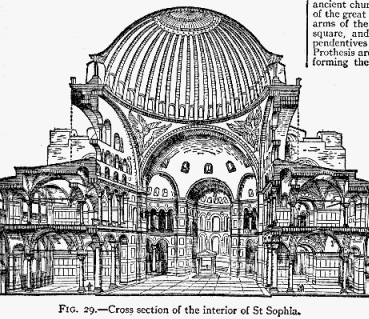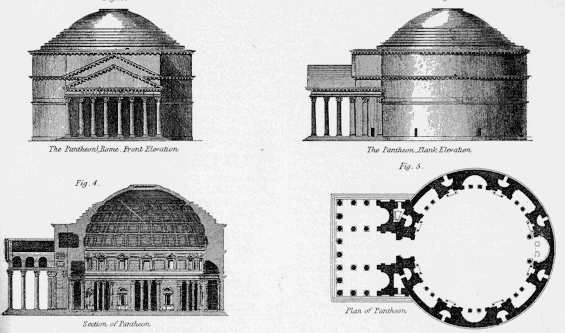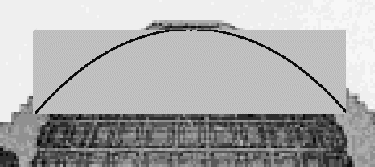Two Kinds of Structural Design
Today, we make buildings by stacking stone. The University of Houston's College of Engineering presents this series about the machines that make our civilization run, and the people whose ingenuity created them.
Jacques Heyman looks at ancient buildings in his book, The Stone Skeleton [1]. Then he tells how the nature of structural design changed 400 years ago. The change took place right after Galileo wrote a crude theory for calculating stresses in a cantilever beam. Ever since then, structural engineers have focused on stress analysis. They ask what loads cause beams to crack or arches to collapse. Ever since Galileo, new kinds of math have steadily made it easier to answer those questions.
Ancient design was another matter entirely. Medieval masons didn't study the theorems and proofs of Euclid. But they did use their squares and compasses to form marvelous geometric shapes in stone. The old masons found natural shapes that stay in balance -- even when they're disturbed. As long as you don't subject stones to tension, or to forces that make them slide on one another, masonry stands up. The old cathedrals have survived earthquakes and bombing raids that've leveled cities around them.
In 1675, a generation after Galileo, the English scientist Robert Hooke made a point that helps show how we build with masonry. First, he said, hang a chain from two points. It naturally hangs in a state of pure tension. Now turn the shape of the hanging chain upside down. You get the shape of an arch that's loaded in pure compression -- no tension, no stones sliding on one another.
Heyman inscribes that upside-down hanging-chain shape on pictures of old arches. He finds it fits within all of them. Once the arch accommodates that shape, you don't need any stress analysis.
Unless you load stone so heavily that it breaks under compression, it won't break at all. And you don't squash stone. Hagia Sophia, Notre Dame, Westminster Abbey -- they were all created by the geometry of stacked stone.
In the century after Galileo we started building with iron, then steel. Steel is as strong when you pull it as when you squeeze it. Now we made bridge trusses with members in tension as well as compression, and cantilever structures that could never be rendered in stone. All the while we wove mathematics about our designs.
But we also lost features with the new structures. Many old masonry buildings are cracked, but the cracks hardly matter. It's an old saying that if masonry stands five minutes after you remove the forms, it'll stand 500 years. Hagia Sophia Cathedral in Istanbul, with its dome over 100 feet across, has stood almost 1500 years.
To build the old buildings of stacked stone, you began by seeing them, not by calculating them. They came from an almost incomprehensibly different corner of the human psyche than steel buildings do. And that is surely why they touch a different part of the human psyche as well.
I'm John Lienhard, at the University of Houston, where we're interested in the way inventive minds work.
(Theme music)
1. Heyman, J., The Stone Skeleton: Structural Engineering of Masonry Architecture. New York: Cambridge University Press, 1995.

Hagia Sophia (incorrectly called "St. Sophia") built as a cathedral, and last used as a mosque
From the 1911 Encyclopaedia Britannica

The Pantheon, whose dome was made from cast concrete which, like stacked stone, will not sustain any load in tension
From the 1897 Encyclopaedia Britannica

The shape of a catenary curve --- the curve defined by a hanging chain

Superposition of an inverted catenary on the arch of the Pantheon dome
Image by John Lienhard